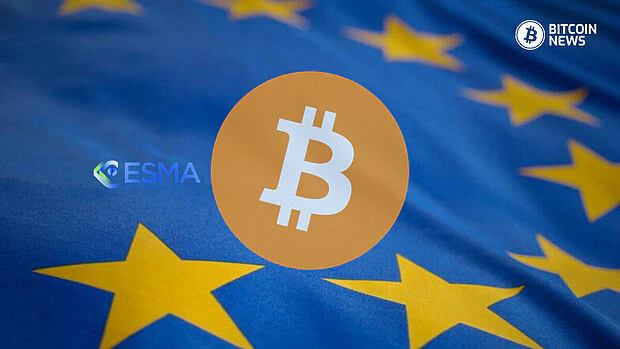The European Securities and Markets Authority (ESMA) is considering a significant move that could potentially reshape the European investment landscape: incorporating Bitcoin (BTC) into the region’s €12 trillion mutual fund market.
ESMA, the EU’s financial regulatory body, is exploring the possibility of allowing Undertakings for Collective Investment in Transferable Securities (UCITS) to diversify their portfolios by including bitcoin among other asset classes.
UCITS are popular retail investment products, constituting over 75% of funds held by EU citizens.
In a guideline published on May 7, ESMA initiated discussions with industry experts to gather insights on the feasibility and potential impact of integrating digital assets into UCITS.
These funds, which include mutual, exchange-traded, or money market funds, are governed by EU regulations and attract investors both within and outside the European Union seeking exposure to the European market.
ESMA Seeking Insights from Stakeholders
ESMA has invited stakeholders to provide their insights and opinions on several questions regarding the integration of digital assets into UCITS. It stated:
“To this end, ESMA seeks […] to gather insights on the manner and the extent to which UCITS have gained direct and indirect exposures to certain asset classes that may give rise to divergent interpretations and risk for retail investors
(e.g. structured/leveraged loans, catastrophe bonds, emission allowances, commodities, crypto assets, unlisted equities).”
Stakeholders have until August 7 to provide feedback that could lead to significant changes in the investment landscape.
If Bitcoin is approved for UCITS, it would provide a breakthrough opportunity for European investors to diversify their investment strategies and gain mainstream access to digital asset investments.
In addition to considering Bitcoin’s inclusion, ESMA has sought feedback on how adding specific digital assets to the UCITS framework would be affected by the Markets in Crypto Assets (MiCA) regulation passed in 2023.
It’s crucial to note the difference between UCITS and Bitcoin Exchange-Traded Funds (ETFs), which offer direct exposure to bitcoin investment in a regulated manner.
Unlike ETFs, which solely focus on bitcoin, UCITS investments are poised to adopt a diverse approach, potentially incorporating multiple funds with varying allocations in bitcoin.
This approach aligns with existing EU regulations, which prohibit entirely autonomous digital asset-centric investment vehicles.
Andrea Pantaleo, a lawyer specializing in digital asset regulation and litigation at DLA Piper, believes that the impact of Bitcoin approval for UCITS could be more significant than that of US ETFs. He explains:
“The impact would be more significant than the US ETFs because there could be plenty of fund compartments interested in investing small percentages of liquidity in crypto-assets.”
The enthusiasm for bitcoin-related investment avenues is evident from the rapid accumulation of assets under management (AUM) by US spot ETFs, which totaled $10 billion within just 20 days of their market debut.
Notably, the process of updating the UCITS eligible assets rules is expected to be lengthy and subject to negotiation. Nonetheless, this move signals the EU’s ongoing efforts to provide a streamlined regulatory framework for managing digital assets within the region.










